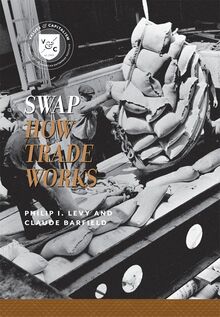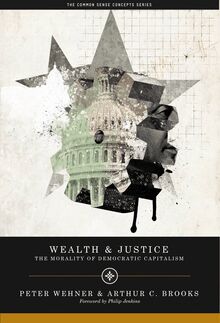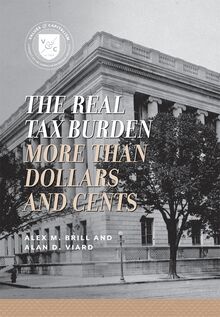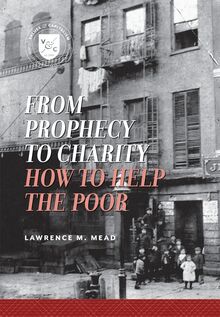-
 Univers
Univers
-
 Ebooks
Ebooks
-
 Livres audio
Livres audio
-
 Presse
Presse
-
 Podcasts
Podcasts
-
 BD
BD
-
 Documents
Documents
-
- Cours
- Révisions
- Ressources pédagogiques
- Sciences de l’éducation
- Manuels scolaires
- Langues
- Travaux de classe
- Annales de BEP
- Etudes supérieures
- Maternelle et primaire
- Fiches de lecture
- Orientation scolaire
- Méthodologie
- Corrigés de devoir
- Annales d’examens et concours
- Annales du bac
- Annales du brevet
- Rapports de stage
La lecture à portée de main
Vous pourrez modifier la taille du texte de cet ouvrage
Découvre YouScribe en t'inscrivant gratuitement
Je m'inscrisDécouvre YouScribe en t'inscrivant gratuitement
Je m'inscrisEn savoir plus
Vous pourrez modifier la taille du texte de cet ouvrage
En savoir plus

Description
Sujets
Informations
| Publié par | AEI Press |
| Date de parution | 16 novembre 2011 |
| Nombre de lectures | 0 |
| EAN13 | 9780844772110 |
| Langue | English |
Informations légales : prix de location à la page 0,0450€. Cette information est donnée uniquement à titre indicatif conformément à la législation en vigueur.
Extrait
THE REAL TAX BURDEN
More than Dollars and Cents
THE REAL TAX BURDEN
More than Dollars and Cents
Alex M. Brill and Alan D. Viard
AEI Press Publisher for the American Enterprise Institute Washington, D.C.
Distributed by arrangement with the National Book Network 15200 NBN Way, Blue Ridge Summit, PA 17214 To order call toll free 1-800-462-6420 or 1-717-794-3800.
For all other inquiries please contact AEI Press, 1150 17th Street, N.W., Washington, D.C. 20036 or call 1-800-862-5801.
Copyright © 2011 by the American Enterprise Institute for Public Policy Research, Washington, D.C.
ALL RIGHTS RESERVED.
No part of this publication may be used or reproduced in any manner whatsoever without permission in writing from the American Enterprise Institute except in the case of brief quotations embodied in news articles, critical articles, or reviews. The views expressed in the publications of the American Enterprise Institute are those of the authors and do not necessarily reflect the views of the staff, advisory panels, officers, or trustees of AEI.
Brill, Alex M.
The real tax burden : more than dollars and cents / Alex M. Brill and Alan D. Viard.
p. cm.
Includes bibliographical references.
ISBN-13: 978-0-8447-7210-3 (pbk.)
ISBN-10: 0-8447-7210-0 (pbk.)
ISBN-13: 978-0-8447-7211-0 (ebook)
ISBN-10: 0-8447-7211-9 (ebook)
1. Tax incidence–United States. 2. Externalities (Economics)
3. Social choice. 4. Taxation–United States.
5. Fiscal polic–United States. I. Viard, Alan D. II. Title.
HJ2322.A3B75 2011
33632.940973–dc23
LIST OF ILLUSTRATIONS
FIGURE 1 Four Ways to Tax Consumption 88
TABLES 1 Historical Trends in Federal Revenue Sources 37 2 2011 Individual Income Tax Rates 41 3 Individual Tax Expenditures by Budget Function, 2010 59 4 Top Ten Individual Tax Expenditures, 2010 60
ACKNOWLEDGMENTS
The authors thank Meagan Berry, Earl Grinols, Chad Hill, Henry Olsen, Christy Robinson, Eric Teetsel, and Andy Yuengert for helpful comments.
INTRODUCTION
When people discuss taxes, it is often to complain about them. In these discussions, the tax burden one faces is almost always assumed to be the dollars and cents paid to the government. This limited focus on tax payments threatens to obscure what many economists consider the real tax burden, which they refer to as the excess burden of taxation.
Although tax payments are burdensome to taxpayers, they provide revenue to the government, which can use them to provide benefits and services that offset the burden (if the benefits and services are provided effectively and lie within government’s legitimate role). In contrast, the excess burden discussed in this book is pure waste that provides no revenue to the government. As we explain in the upcoming pages, excess burden arises when taxes interfere with the taxpayer’s freedom to choose his or her preferred behavior. This interference with freedom is the real tax burden, more than the dollars and cents paid to the government.
1 WHAT IS EXCESS BURDEN?
This chapter provides an introduction to excess burden, the central concept of this book. As we explain, excess burden measures the extent to which a tax interferes with the taxpayer’s freedom to choose his or her preferred behavior. Popular discussions of tax policy often focus on the obvious burden of taxation: the amount of taxes people pay. But excess burden arises when behavior changes in a way that causes taxes to not be paid. Excess burden is, in many ways, the real tax burden.
Our ultimate goal is to look at the excess burden of the actual U.S. tax system and how the tax system can be changed to reduce excess burden. We approach this topic in stages. We begin in this chapter by considering the excess burden of a simple hypothetical tax, a tax on soda. In chapter 2, we explain the kinds of excess burden that generally arise from wage, income, and consumption taxes. In chapters 3 through 5, we apply this analysis to the wage and income taxes actually imposed by the federal government and discuss improvements that could be made within those tax systems. In chapter 6, we discuss a more fundamental reform, the partial or complete replacement of income taxation by consumption taxation, which could further reduce excess burden by ending tax penalties on saving.
EXCESS BURDEN OF A SODA TAX
Although we use a soda tax as our initial example, the type of product is not important. The same principles apply to a tax on any other product, or, as we will discuss in chapter 2, to wage, income, and consumption taxes.
Suppose that producers can supply an unlimited amount of soda at a cost of $10 per carton, where the cost includes the minimum profit sufficient to attract capital to the soda industry. Assuming competitive markets, each carton of soda is sold to consumers for $10, in the absence of any taxes on soda. Suppose that, at this price, 100 cartons of soda are produced and sold.
The production of these 100 cartons is mutually beneficial to consumers and producers. (We assume that the production of soda does not cause pollution or otherwise affect third parties.) Producers—workers, owners of capital, and others involved in the production process—are willing to produce each of these cartons in exchange for a $10 payment. Consumers place a value of at least $10 on each carton, as shown by their willingness to pay that amount to acquire it. Additional cartons of soda are not produced, because they do not provide mutual benefit to consumers and producers. Although a 101st carton could be produced at a cost of $10, no consumer is willing to pay that price for another carton. While the additional carton would have some value to consumers, the value is not great enough to make it worthwhile for producers to supply it. The market reaches an efficient outcome, as all production that is mutually beneficial for consumers and producers takes place and no other production takes place. In short, the market achieves all of the potential gains from free exchange.
Introducing a tax on soda changes this benign picture by creating an excess burden. Suppose that a $2-per-carton tax is imposed on soda, causing the price to rise to $12.
At this higher price, consumers purchase fewer cartons of soda. Each of the 100 cartons previously purchased must be worth at least $10 to consumers, because consumers purchased them at the $10 price. Not all of them are worth $12 or more, though. Suppose that, at the $12 price, consumers purchase only 90 cartons of soda. In that case, each of the 91st through the 100th cartons must be worth between $10 and $12 to consumers; consumers purchased them when the price was $10, but not when the price was $12.
To understand the full effects of the tax, it is necessary to look both at the 90 cartons that are still produced with the $2 tax in place and at the 10 cartons that are no longer produced with the tax, but were produced when the tax did not exist. As we explain below, the excess burden arises from the impact on the latter 10 cartons. But we first consider the 90 cartons that are still produced and purchased.
For each of these 90 cartons, the gains from free exchange between consumers and producers are still attained. That is certainly good news, as each of these cartons has a value to consumers of $12 or more, and each costs only $10 to produce. Producers continue to receive a net payment of $10 for each of the 90 cartons, while consumers now pay $12 for each of them, including $2 that goes to the government. The tax raises $180 of revenue.
Although the $180 tax payment is clearly a burden on consumers, it is not “necessarily” a burden on society as a whole. It is instead a transfer of resources from consumers to the government. The government can use the $180 revenue to provide goods and services to the public, which can offset the burden of the tax payments. It can even offset the burden by simply returning the money. Of course, the government may fail to use the revenue properly, in which case the taxpayers suffer a net burden. Any such burden is caused by bad spending policy, though, rather than by the tax itself.
In this book, we focus on another burden imposed by the soda tax, which is in excess of the tax payments and is therefore referred to as the excess burden. (In public finance textbooks, excess burden is sometimes called deadweight loss or welfare cost.) As explained below, the excess burden is pure waste because it raises no revenue for the government. A net burden is unavoidable because the government receives no money with which it can provide services or benefits. No matter how wise its spending policies may be, the government cannot offset this excess burden, as it could with the tax payments. In that sense, the excess burden is the real tax burden.
The excess burden is related to the 10 cartons of soda that are no longer produced and purchased. Although the production and sale of those 10 cartons was mutually advantageous to consumers and producers, these trades no longer occur when the tax is in place. Each of those 10 cartons has a value to consumers of at least $10; we know this because consumers purchased them when the price was $10. But none has a value exceeding $12; we know that because consumers refrain from purchasing them when the price rises to $12. Because each carton costs $10 to produce, consumers received a net gain of somewhere between zero and $2 from the purchase of each of these cartons.
Those gains from trade are destroyed when the tax prevents these cartons of soda from being produced and purchased. The failure of these mutually beneficial transactions to occur is an example of economic inefficiency, because it makes the consumers worse off without making anyone else better off. The problem is that the tax interferes with the freedom of consumers and producers to engage in mutually beneficial exchange, as engaging in such exchanges would trigger additional tax li
-
 Univers
Univers
-
 Ebooks
Ebooks
-
 Livres audio
Livres audio
-
 Presse
Presse
-
 Podcasts
Podcasts
-
 BD
BD
-
 Documents
Documents
-
Jeunesse
-
Littérature
-
Ressources professionnelles
-
Santé et bien-être
-
Savoirs
-
Education
-
Loisirs et hobbies
-
Art, musique et cinéma
-
Actualité et débat de société
-
Jeunesse
-
Littérature
-
Ressources professionnelles
-
Santé et bien-être
-
Savoirs
-
Education
-
Loisirs et hobbies
-
Art, musique et cinéma
-
Actualité et débat de société
-
Actualités
-
Lifestyle
-
Presse jeunesse
-
Presse professionnelle
-
Pratique
-
Presse sportive
-
Presse internationale
-
Culture & Médias
-
Action et Aventures
-
Science-fiction et Fantasy
-
Société
-
Jeunesse
-
Littérature
-
Ressources professionnelles
-
Santé et bien-être
-
Savoirs
-
Education
-
Loisirs et hobbies
-
Art, musique et cinéma
-
Actualité et débat de société
- Cours
- Révisions
- Ressources pédagogiques
- Sciences de l’éducation
- Manuels scolaires
- Langues
- Travaux de classe
- Annales de BEP
- Etudes supérieures
- Maternelle et primaire
- Fiches de lecture
- Orientation scolaire
- Méthodologie
- Corrigés de devoir
- Annales d’examens et concours
- Annales du bac
- Annales du brevet
- Rapports de stage












